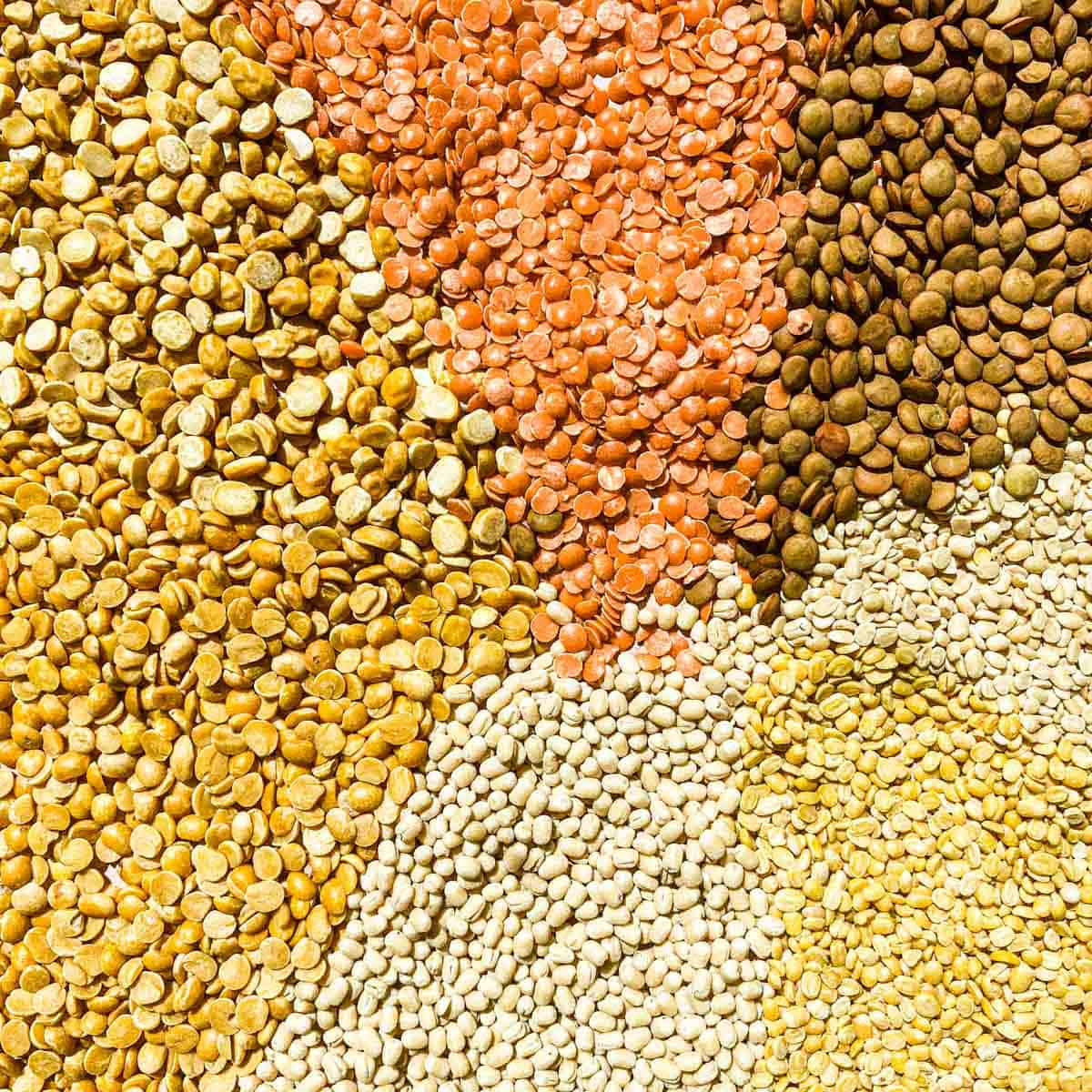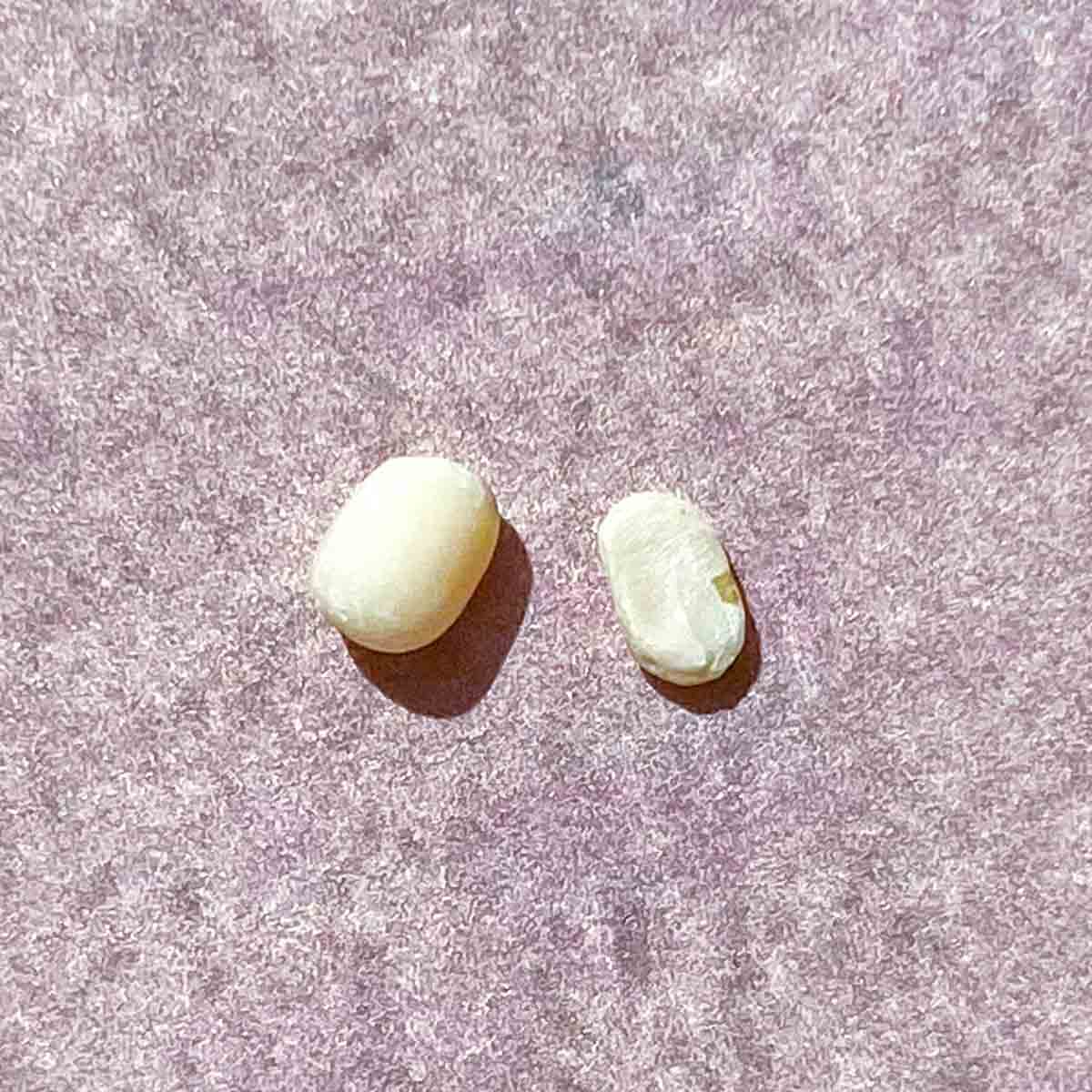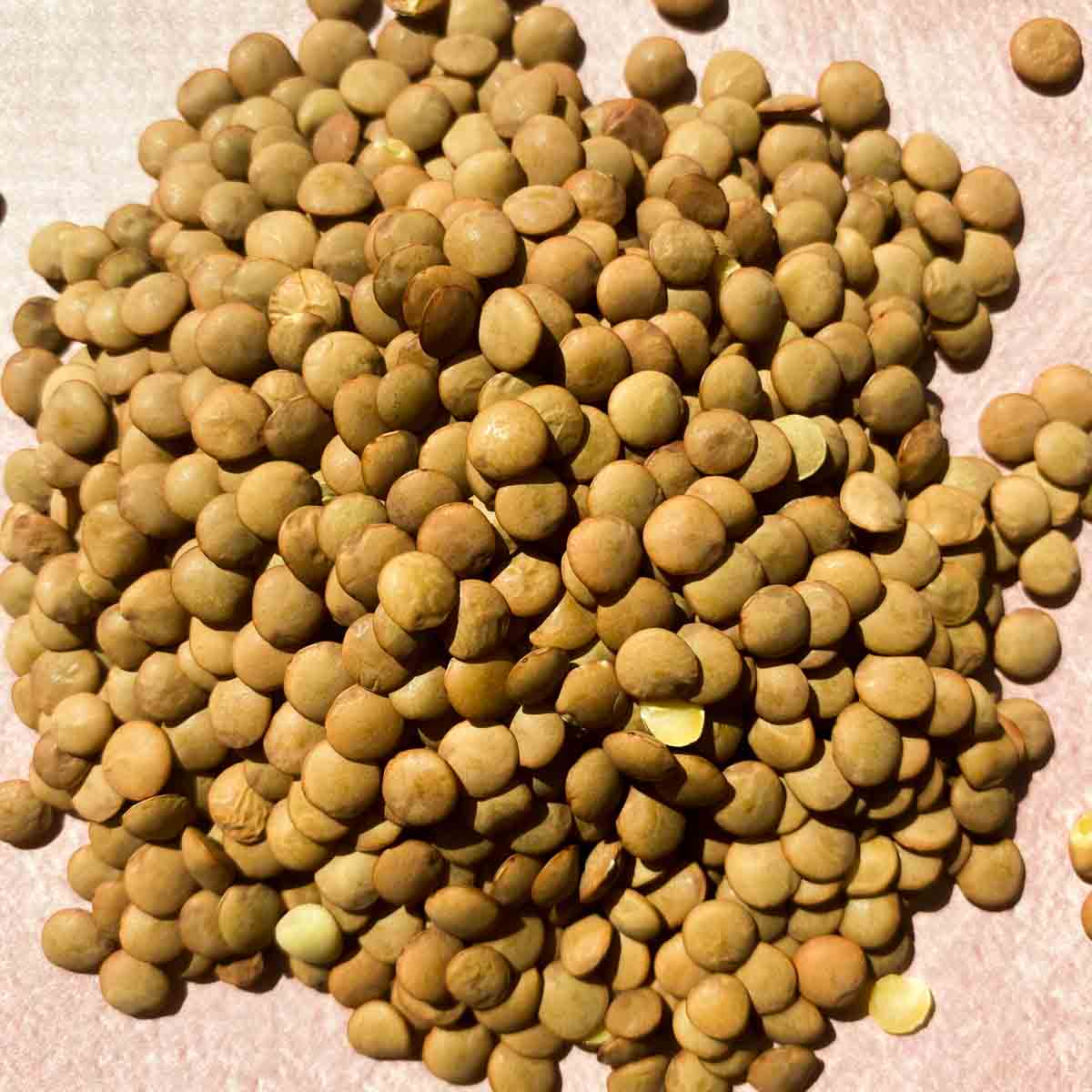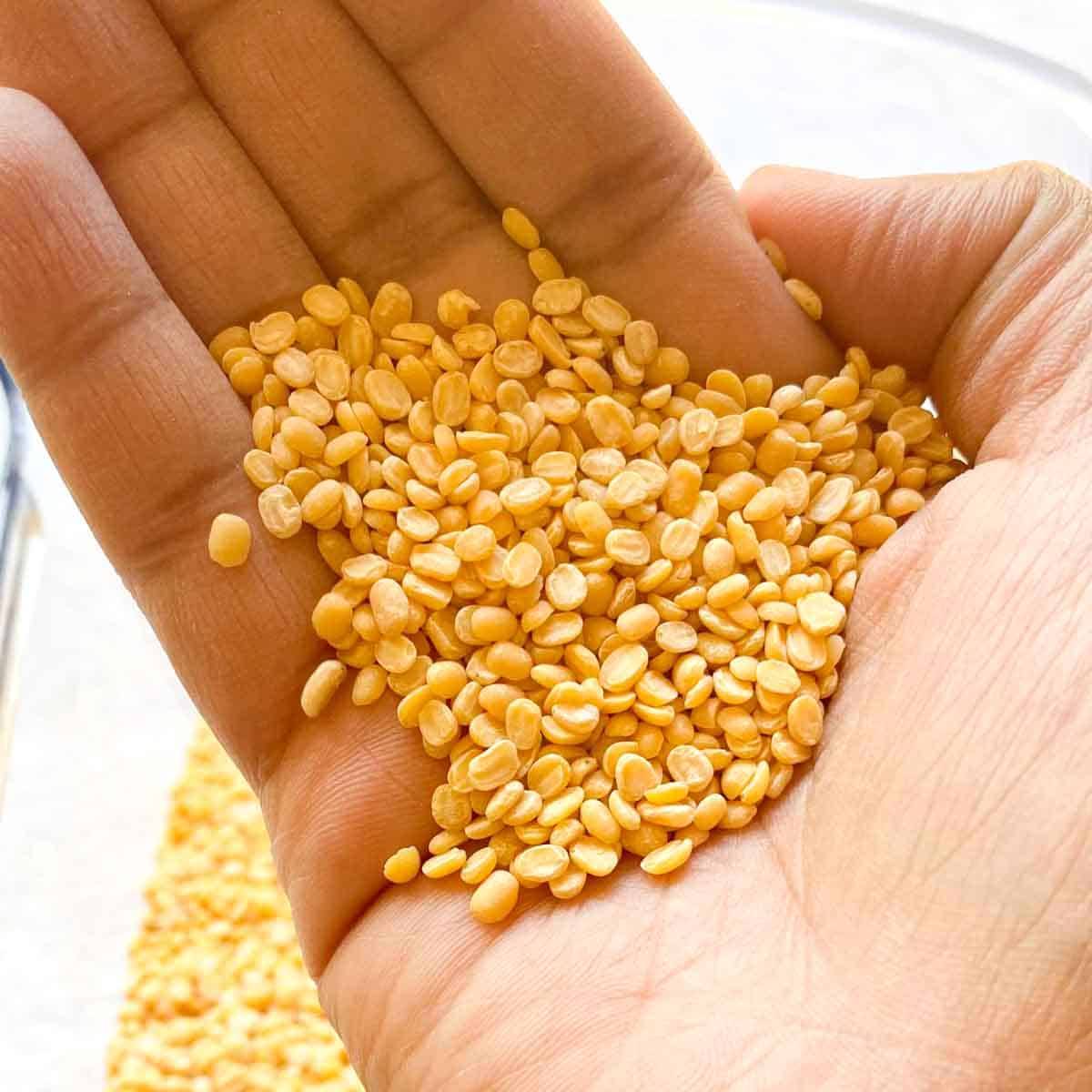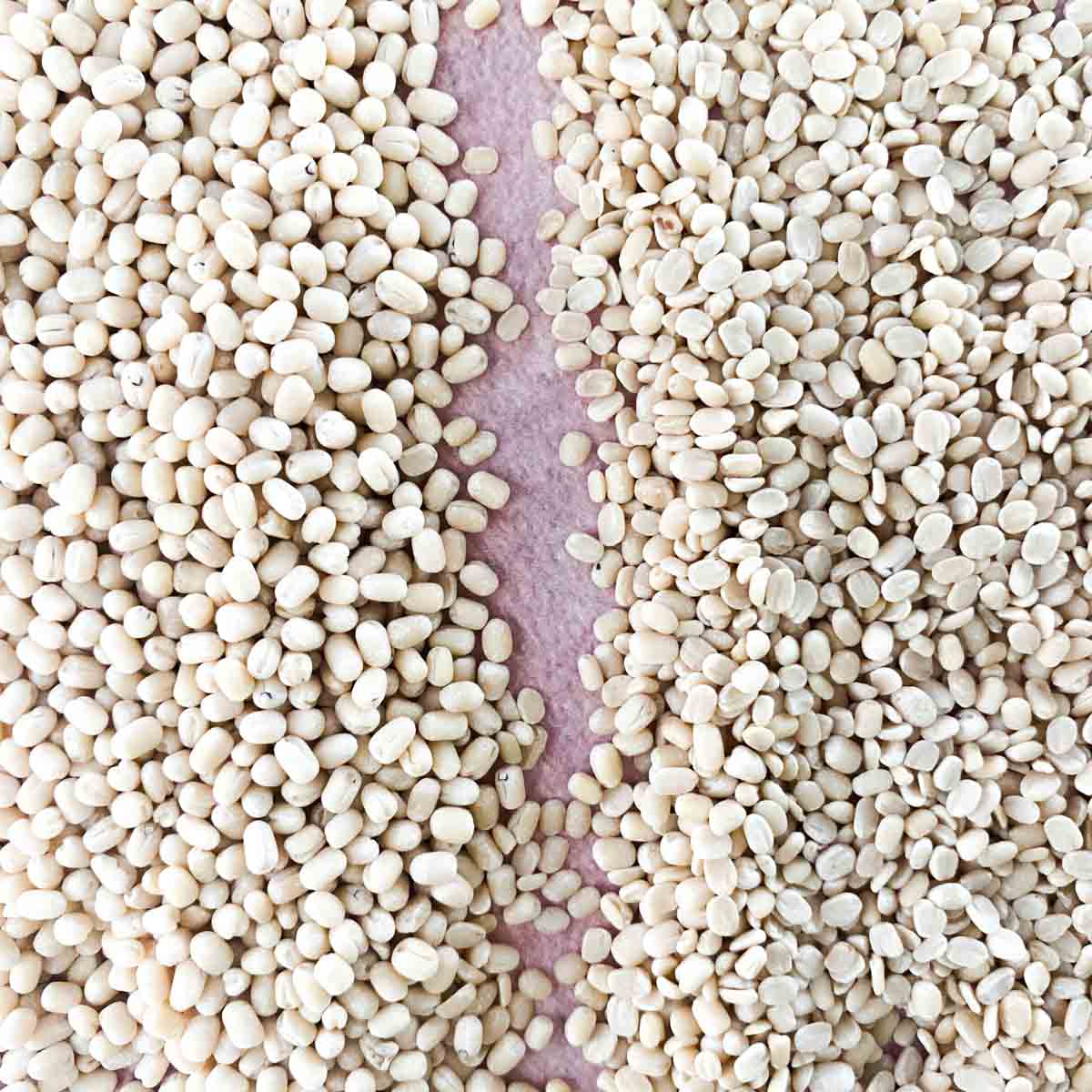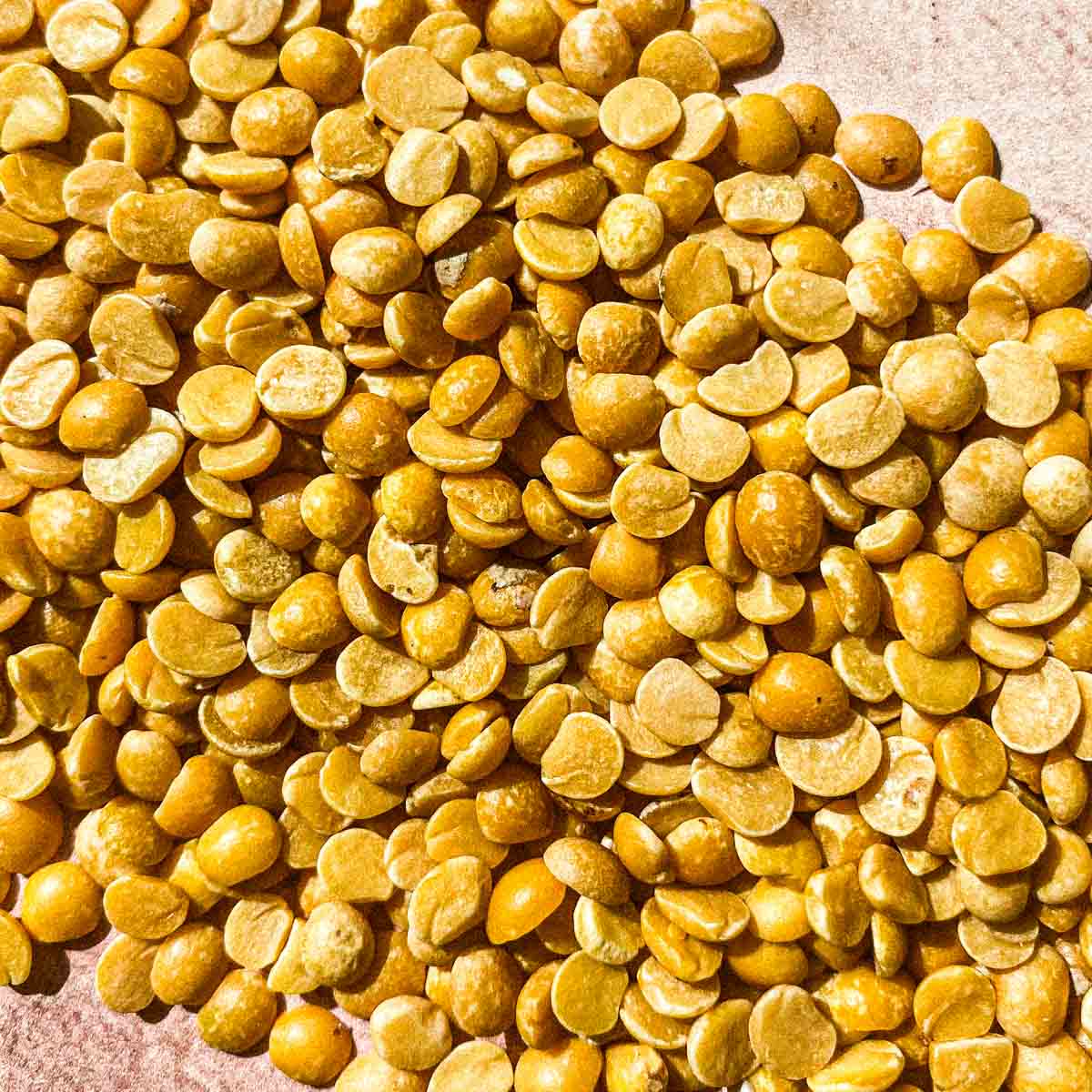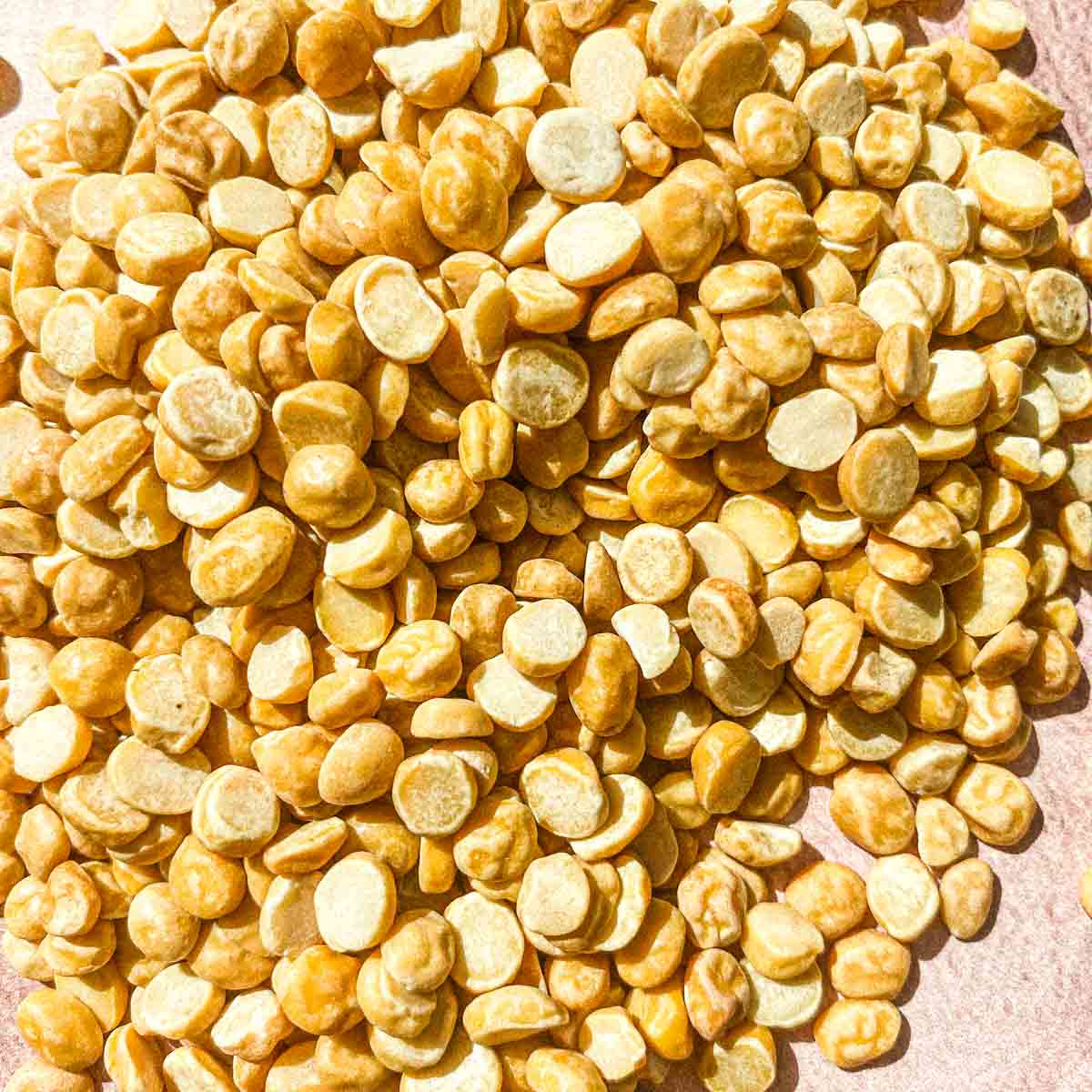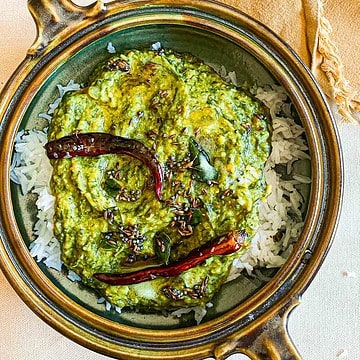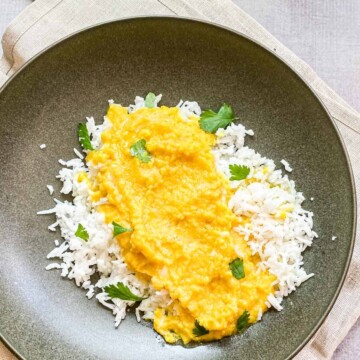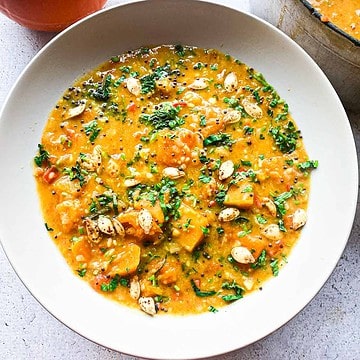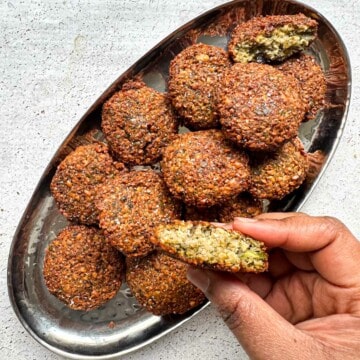Whole Dal vs Hulled Dal vs. Split Dal
Dal is a pulse or lentil that grows in pods. Whole dal are the lentils that are removed from their pods, dried, and sold whole, whereas split dal is split into thinner flatter discs. Whole dal can either have its skin on or off (shelled vs. non-shelled) whereas split dal is more commonly hulled. Most dal varieties can be sold both in whole or split varieties and choosing which one you want depends highly on the dish you are trying to create. There are three general rules when deciding whether to use whole dal vs. split dal. For an even more in-depth article checkout this blog post on how to cook any Indian dal.
Five Main Types Of Indian Dal
Masoor Dal
Masoor dal is often referred to as red lentils and is one of the best lentils for making a quick and creamy stovetop dal because of how thin it is compared to its counterparts. Although the split version of masoor dal is often red or orange in color, in it’s whole form, it is a brown/green color and therefore referred to as brown dal. Whole moong dal or French lentils are a great substitute for whole masoor dal. You can read more in depth about masoor dal and its use cases in this blog post.
Moong Dal
Moong dal, also known as green gram, is green (as its moniker suggests) in its whole form and bright yellow in its split form. The split moong dal is comparable in thickness to split masoor dal and they are interchangeable when making creamy dal dishes like spinach dal. The whole version of moong dal, aka whole green gram, on the other hand, is great when sprouted and incorporated into lentil salads. You can read more in depth about masoor dal in this blog post.
Urad Dal
Urad dal, also known as black lentil, is a versatile dal that when whole and un-skinned is black in color and white otherwise. In its whole form, this dal is great in hefty dishes like dal makhani where the dal will retain its shape even after long cooking times. The un-skinned whole urad dal, which is sold as urad gota, is white in color and great for making South Indian batters like dosa, idli, and vada. Last but not least, the split version of urad dal is great to add in tempering or tadkas. The dal crisps up adding a nice crunch and adds a layer of nuttiness to the tadka. You can learn more about urad dal in this detailed blog post.
Toor Dal
Toor dal, also known as pigeon peas, is a bright yellow color when split. It looks very similar to moong dal but is noticeably thicker. Split toor dal can be used in place of moong or masoor dal but should be soaked for at least 30 minutes to ensure even cooking.
Chana Dal
Chana dal is the split Indian chickpea called kala chana. It is high in protein and has a whiter hue compared to other yellow dals like toor dal. It is a hefty and thick dal that can be used to create a batter like in masala vada or in podis like sambar podi. You can learn more in depth about chana dal in this blog post.
Dal recipes
If you are looking for more details on how to master cooking dal, check out this in-depth guide to cooking any dal. It goes over choosing the right dal for your use case, soak times, and details the pros and cons of cooking using the pressure cooker vs. stovetop. These recipes down below are great ones which you can utilize to make dal, the dish. These recipes use dal, the lentil, but make dishes that aren’t categorized as dal!
Which Dals Are Best For Health?
All dals are great meat alternatives and are packed with anywhere between 8-12g of protein for every 50g. In general, dals that are whole have more fiber than their split counterparts. This is especially apparent in masoor dal which has more than 2x the amount of fiber in its whole form than its split form. Chana dal has the highest fat and lowest protein content compared to other pulses like masoor, moong, toor, and urad dal. You can choose the dal that meets your dietary macro needs to find the best one that is suited to you.
